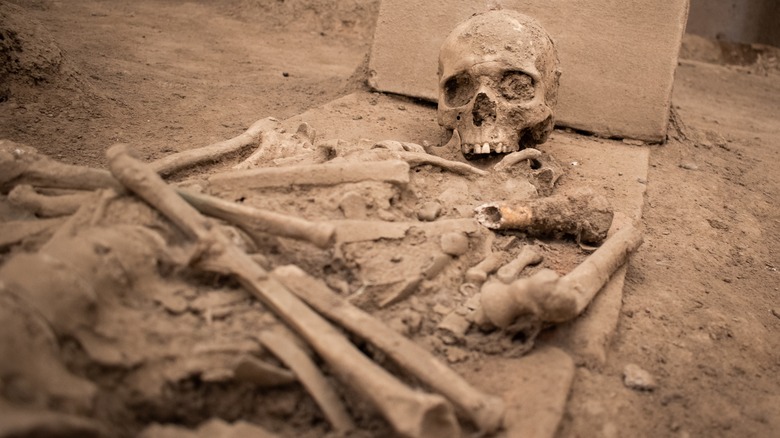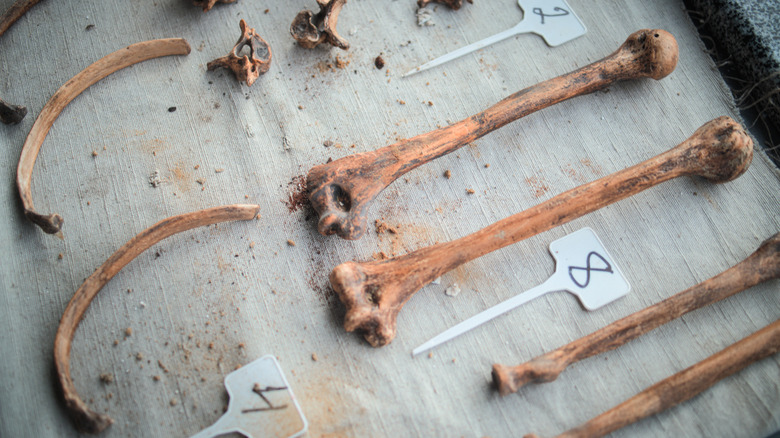Norway's Mysterious Well-Man Explained
What separates history from myth? The answer mostly comes down to evidence: Whatever we can prove is considered historical fact, and the remainder we chalk up to fiction, or at the very least, hyperbole. However, that which is provable is constantly growing thanks to advancements in technology, and a recent development out of Norway reveals the legends of yore may deserve more credit than we give them.
The old Norse epic "Sverris Saga" recounts the reign of Sverrir Sigurdsson, who ascended the throne of Norway at the close of the 12th century, amidst a series of civil wars. Sverrir made a quick enemy of local archbishops as he sought to undermine the authority of the Pope. In 1197, things came to a head, and church-affiliated forces known as Baglers (from the Norse for "bishop's wand"), attacked Sverrir's stronghold, the castle Sverresborg. No harm came to Sverrir — he was out of town that day — but the raiders destroyed everything. "Sverris Saga" states that the Baglers, in a final act of defiance on their way out, even tossed a dead man into the king's well.
This story was long presumed anecdotal. However, in 1938, archaeologists were excavating the ruins of Sverresborg castle when they made an unsettling discovery. About 20 feet deep in the shaft of a stone well, they laid eyes on the unmistakable form of a human skeleton. Was the apocryphal Well-Man real? It would take almost a century to prove, but we can now say with some confidence that the answer is yes.
How scientists identified the Well-Man
The discovery of the Well-Man in 1938 fueled the debate over whether the "Sverris Saga" was fact or fiction, but it would take decades to get any real answers. Archaeologists in the '30s had less advanced equipment, and it was not possible to cleanly extract the bones from their surroundings. All the team could do for the time was take a picture of the site. Shortly thereafter, research efforts were dealt a devastating blow by the outbreak of WWII, in which German forces took control of Norway. They set up a base on the grounds of Sverresborg and filled the well with equipment.
It wouldn't be until 2016 that a proper excavation of Sverresborg was finally completed, and the Well-Man removed from his surroundings. Thanks to radioactive dating like the kind used to date fossils, researchers estimated his death to be about 900 years ago, around the time of "Sverris Saga". However, the question remained of who this man was. The saga provides no details, so researchers needed to look at the blueprint of life: DNA.
This proved incredibly difficult, as bacteria had overtaken most of the bones, leaving little human DNA behind. However, researchers from the Norwegian University of Science and Technology and the Norwegian Institute for Cultural Heritage were able to extract DNA from one of the Well-Man's teeth and sequence it. Their findings, published in the journal, iScience, reveal that the Well-Man came from an unexpected home.
The surprising implication of the Well-Man's identity
It was long assumed that the Well-Man must have been one of King Sverrir's forces, slain by the invading Baglers, but DNA analysis has seemingly disproved this theory. One of the most important kinds of information that can be found by knowing the sequence of a DNA molecule regards gene mutations, particularly the hereditary mutations we inherit through our family lines.
Analysis of the Well-Man's DNA indicated that he had the classic Nordic features of blond hair and blue eyes, but it also indicated that he was born in Agder, a region at the southern tip of Norway, far from Sverresborg, which is in the center of the country, near the present-day city of Trondheim. This is quite curious because Agder was a stronghold of the Baglers, meaning that the man the raiders dumped into King Sverrir's well was probably one of their own. In light of this, historians have revised their interpretation of the old saga.
The Well-Man's skeleton is missing an arm and bears marks of head trauma, indicating a violent end. It is now believed that he was one of the Baglers and that his party dumped him into the well in hopes of contaminating the king's water. However, by destroying the castle grounds, the Baglers had already ensured that the king would not make a home of Sverresborg any longer. When Sverrir died five years later, the war was still raging.


